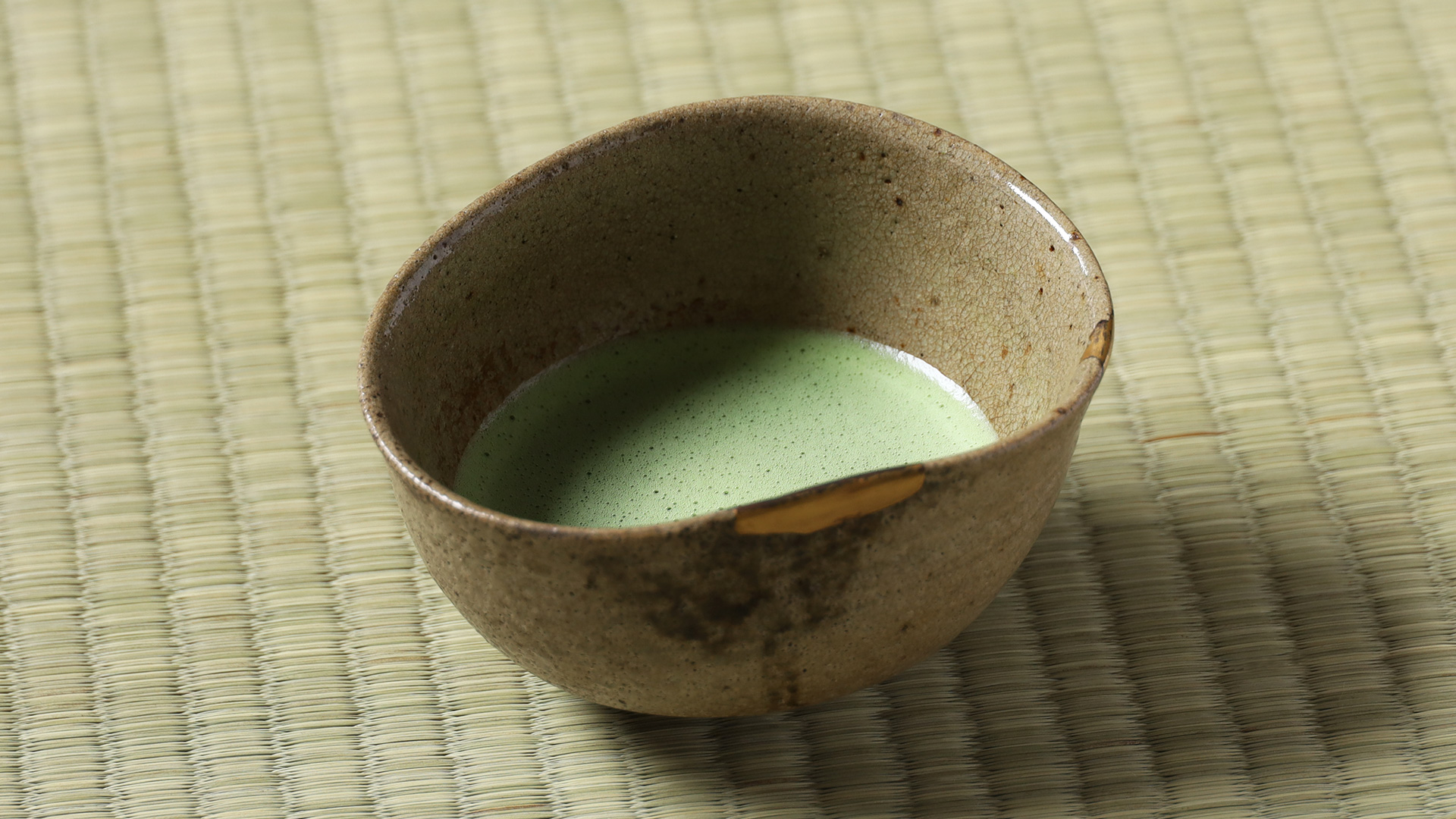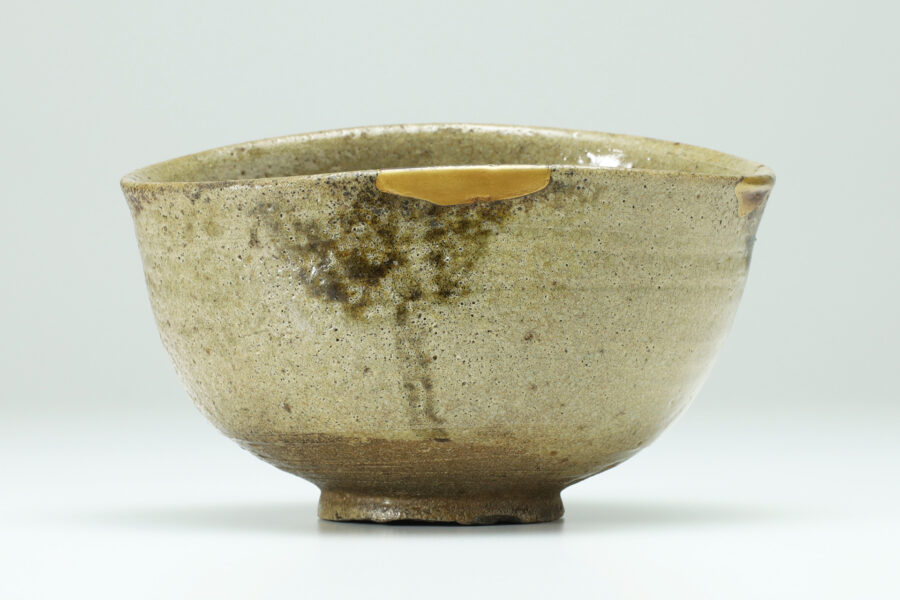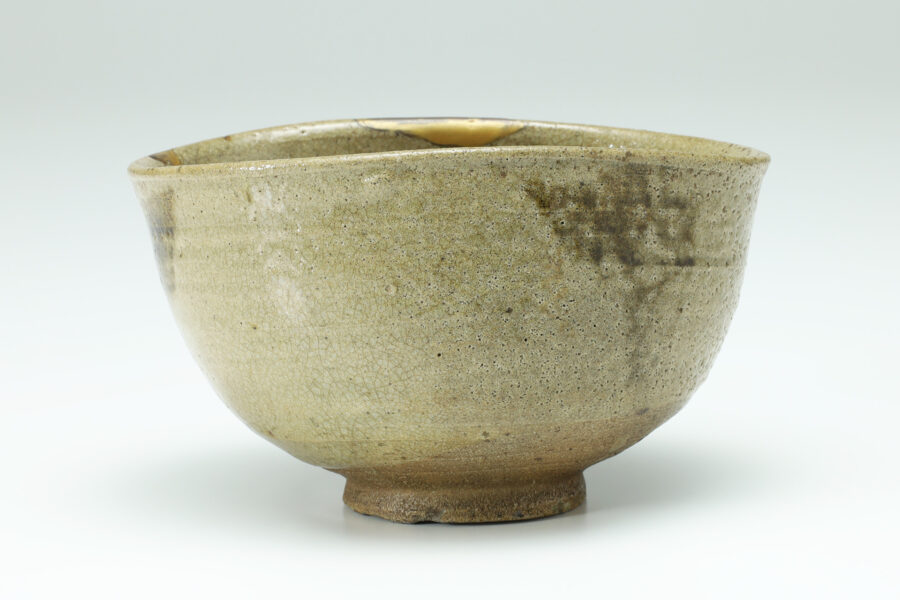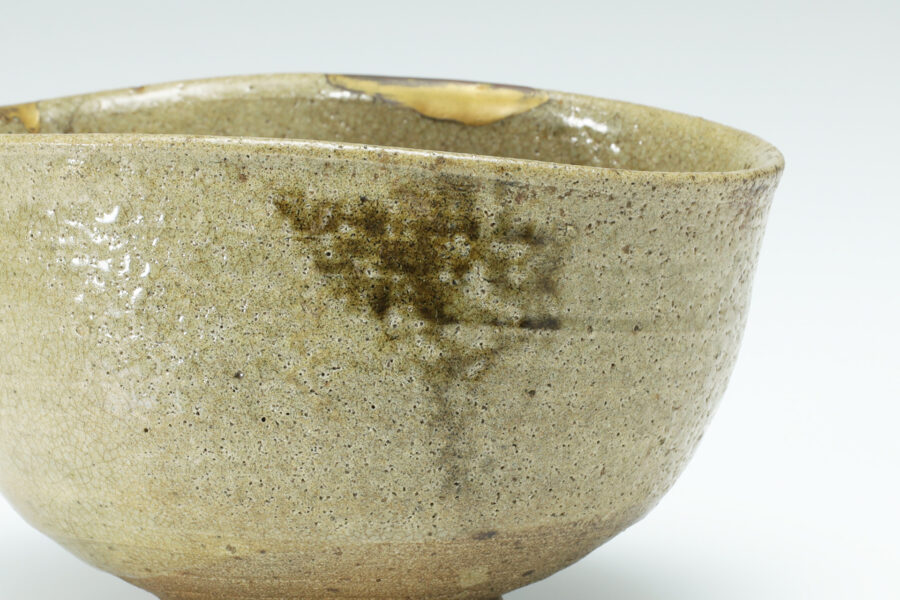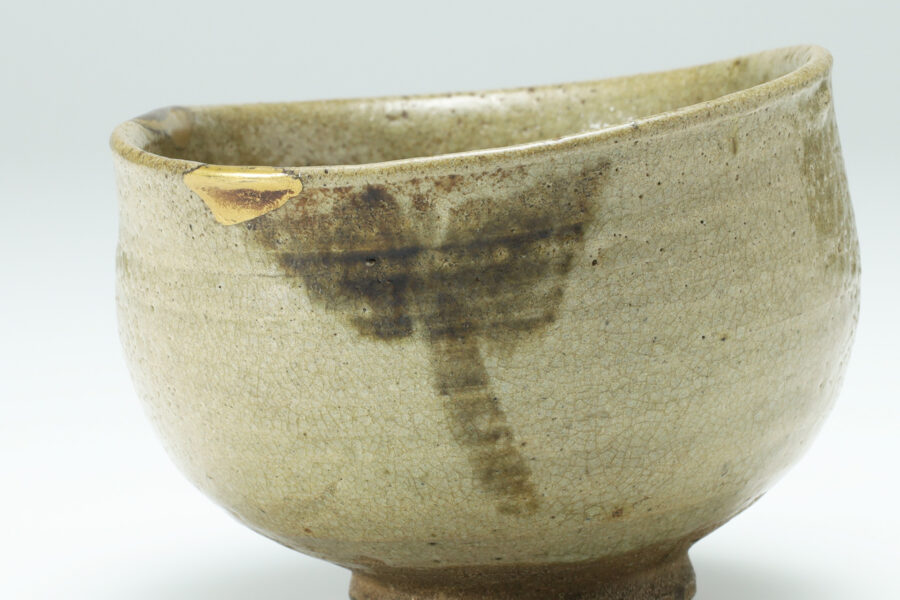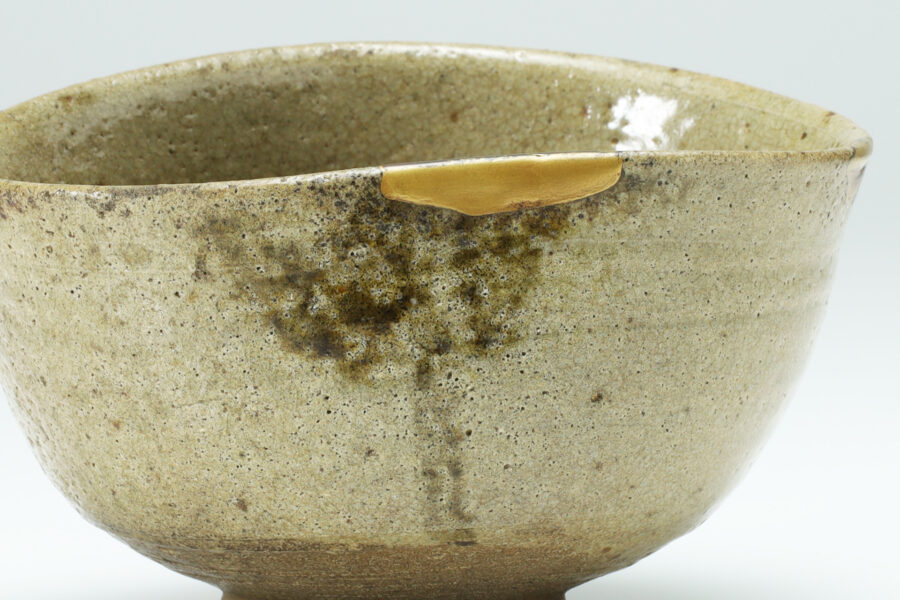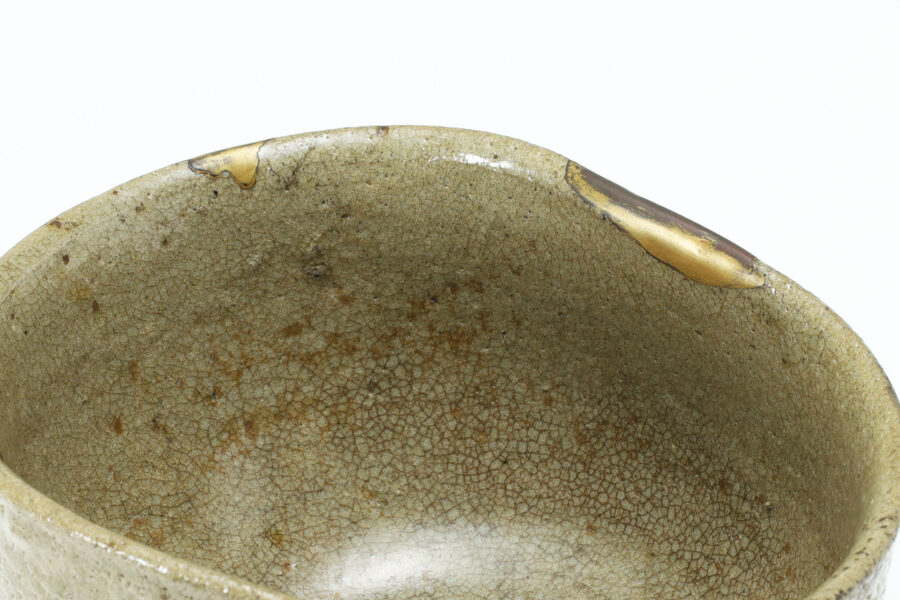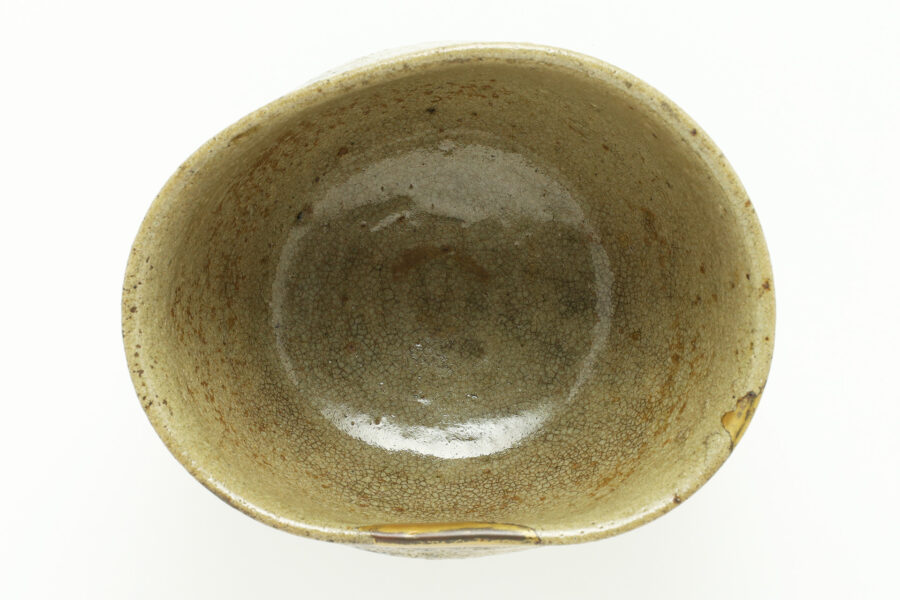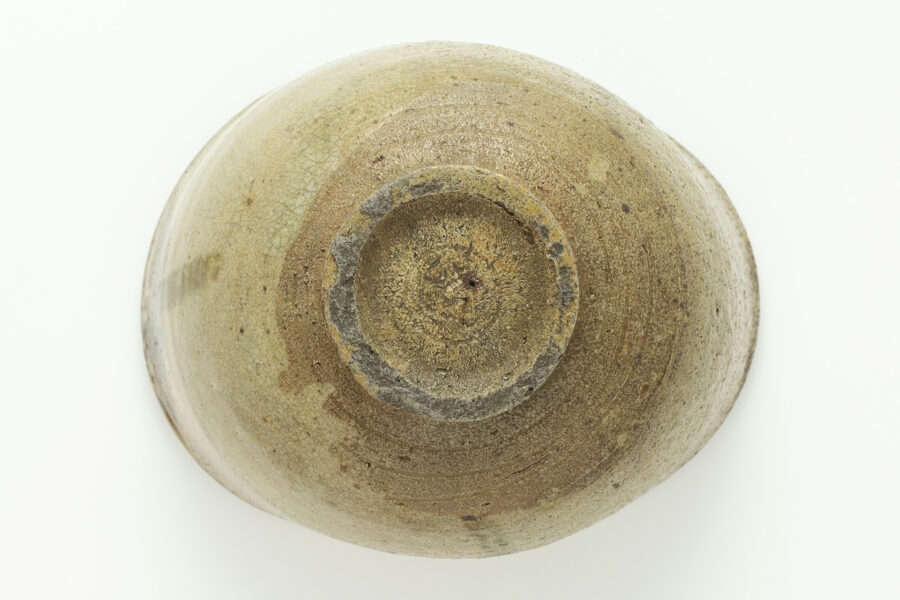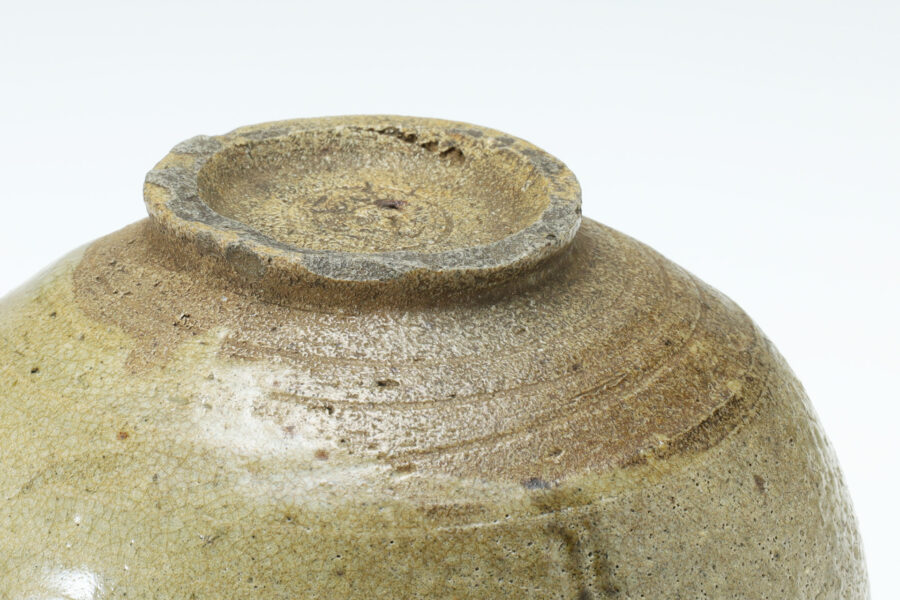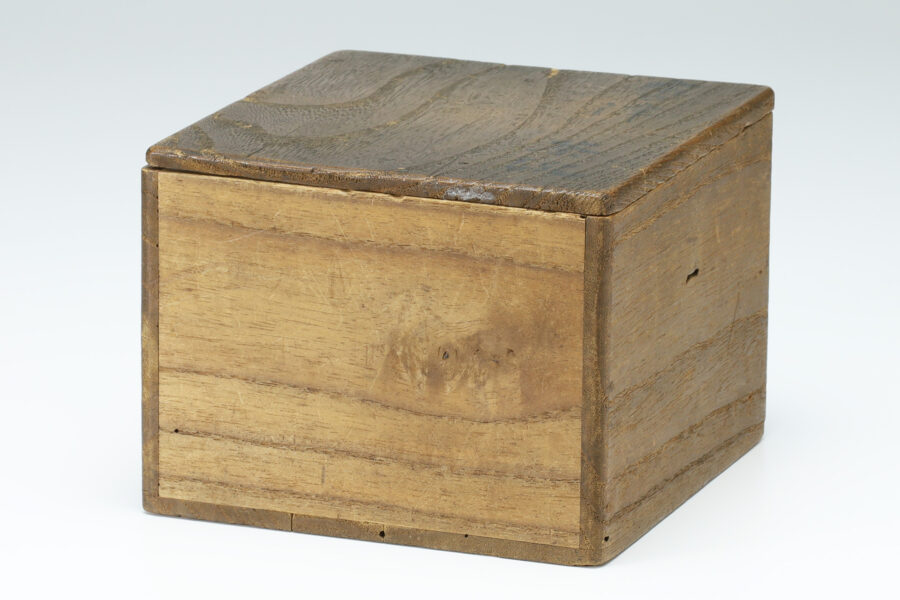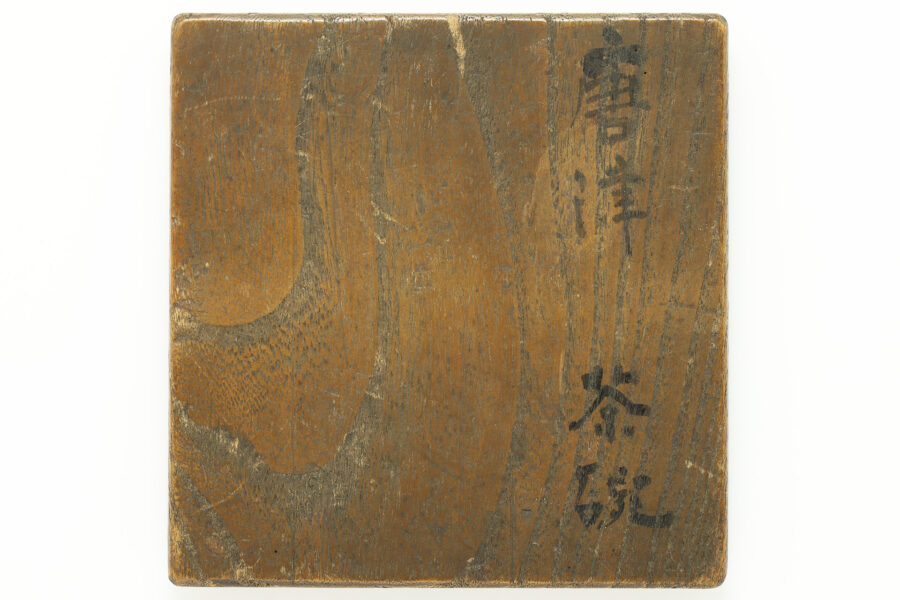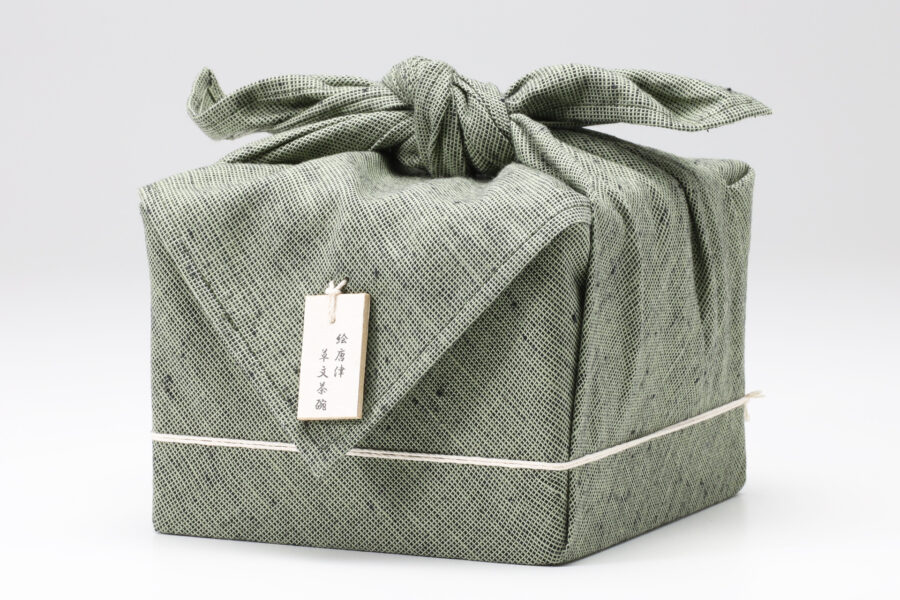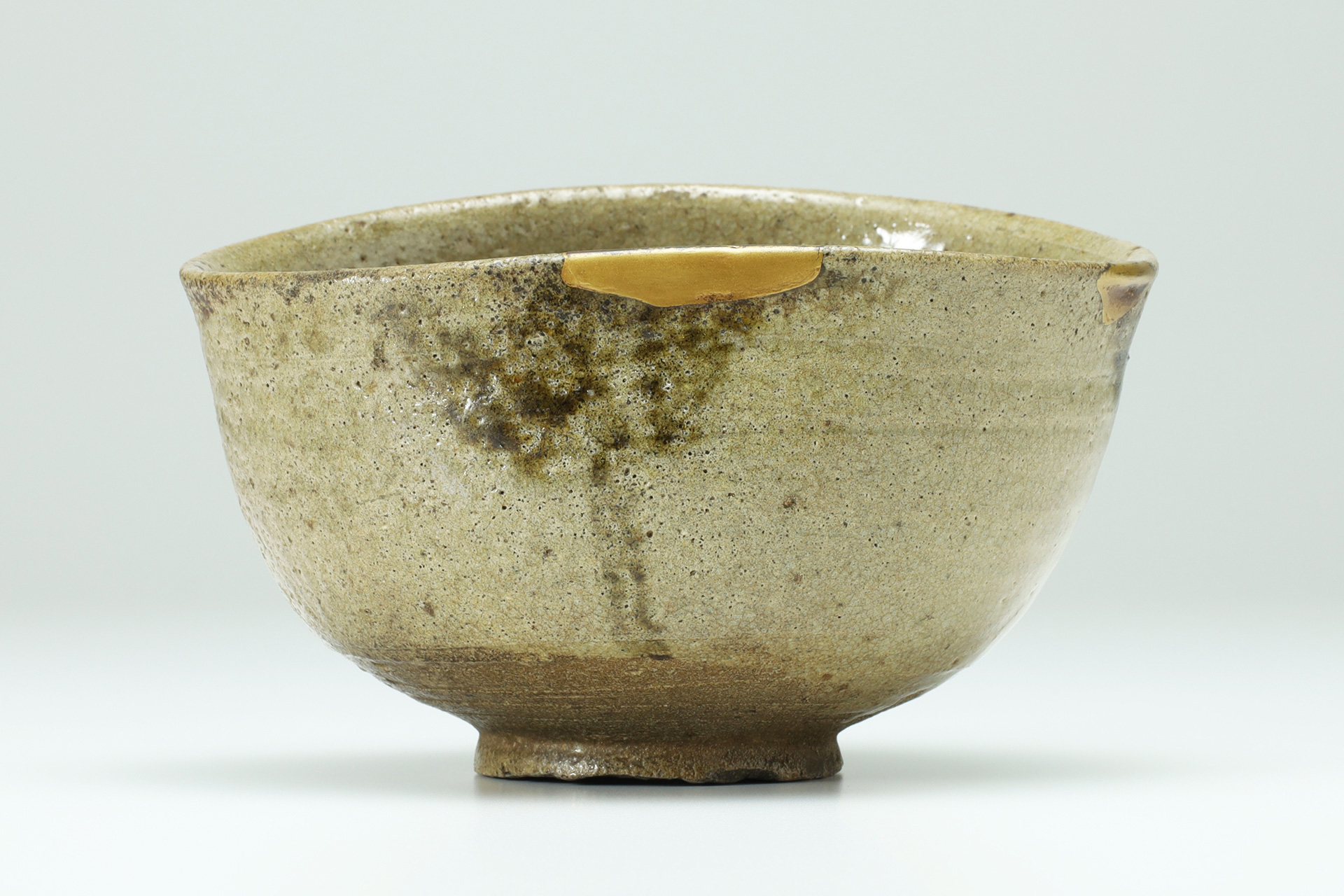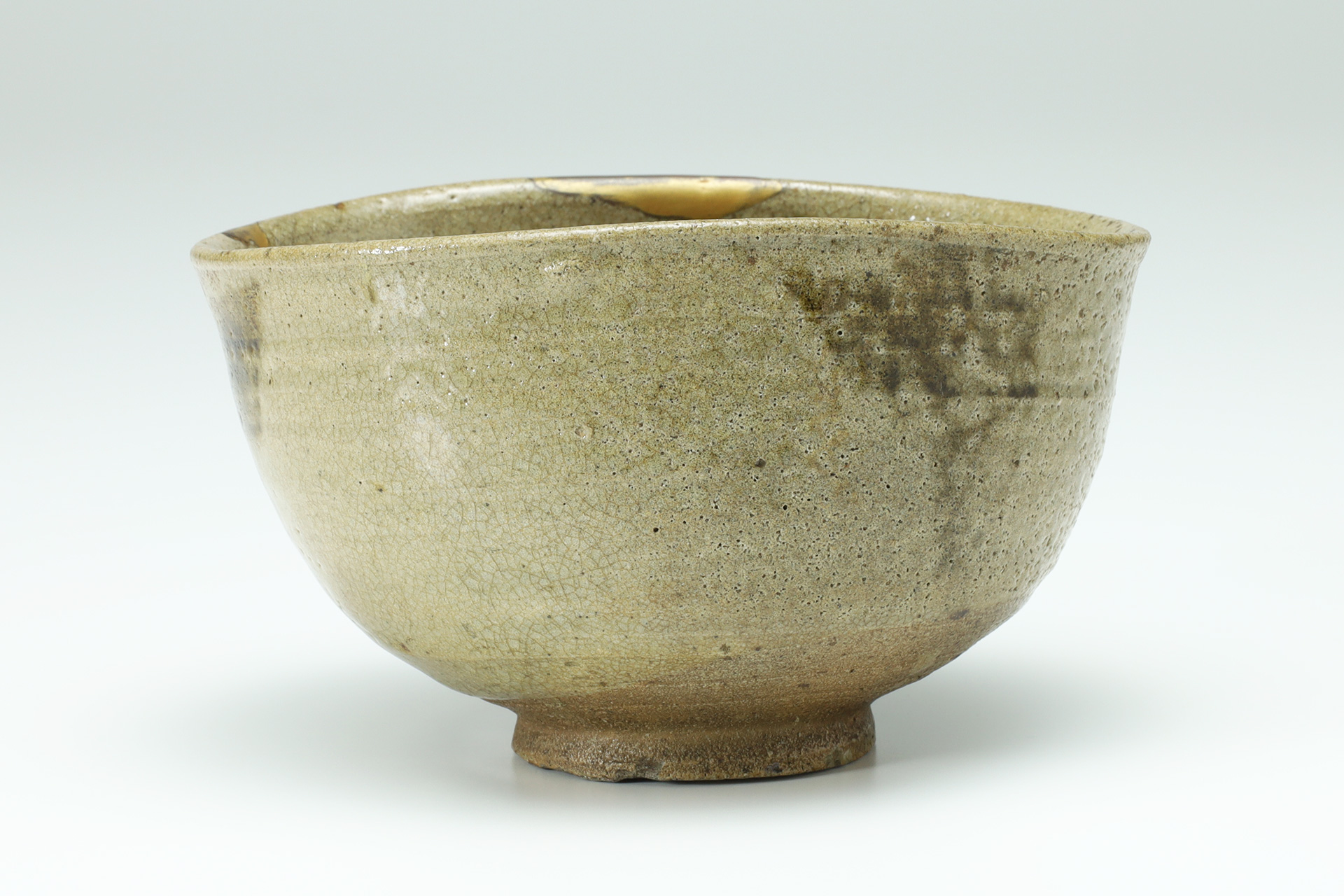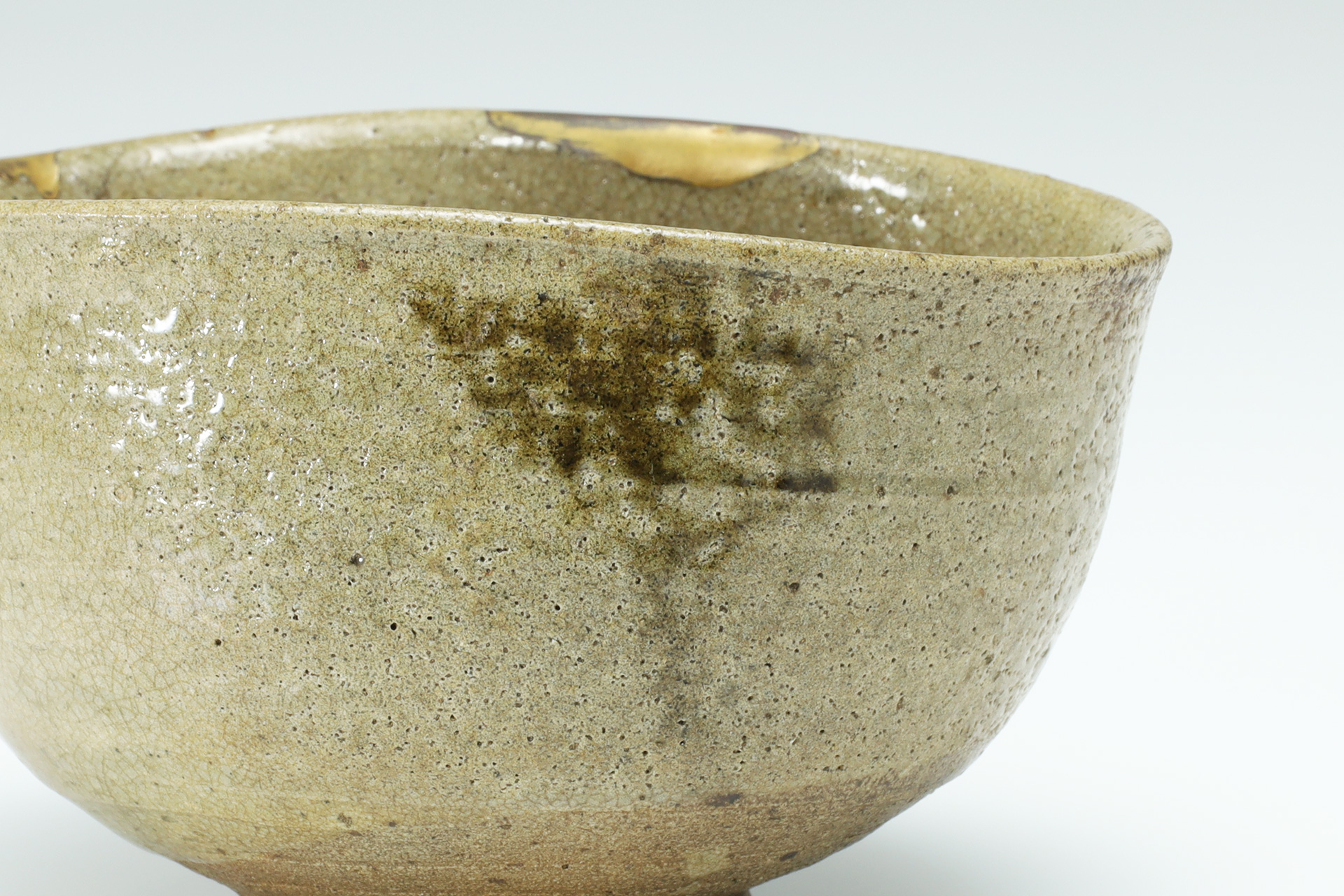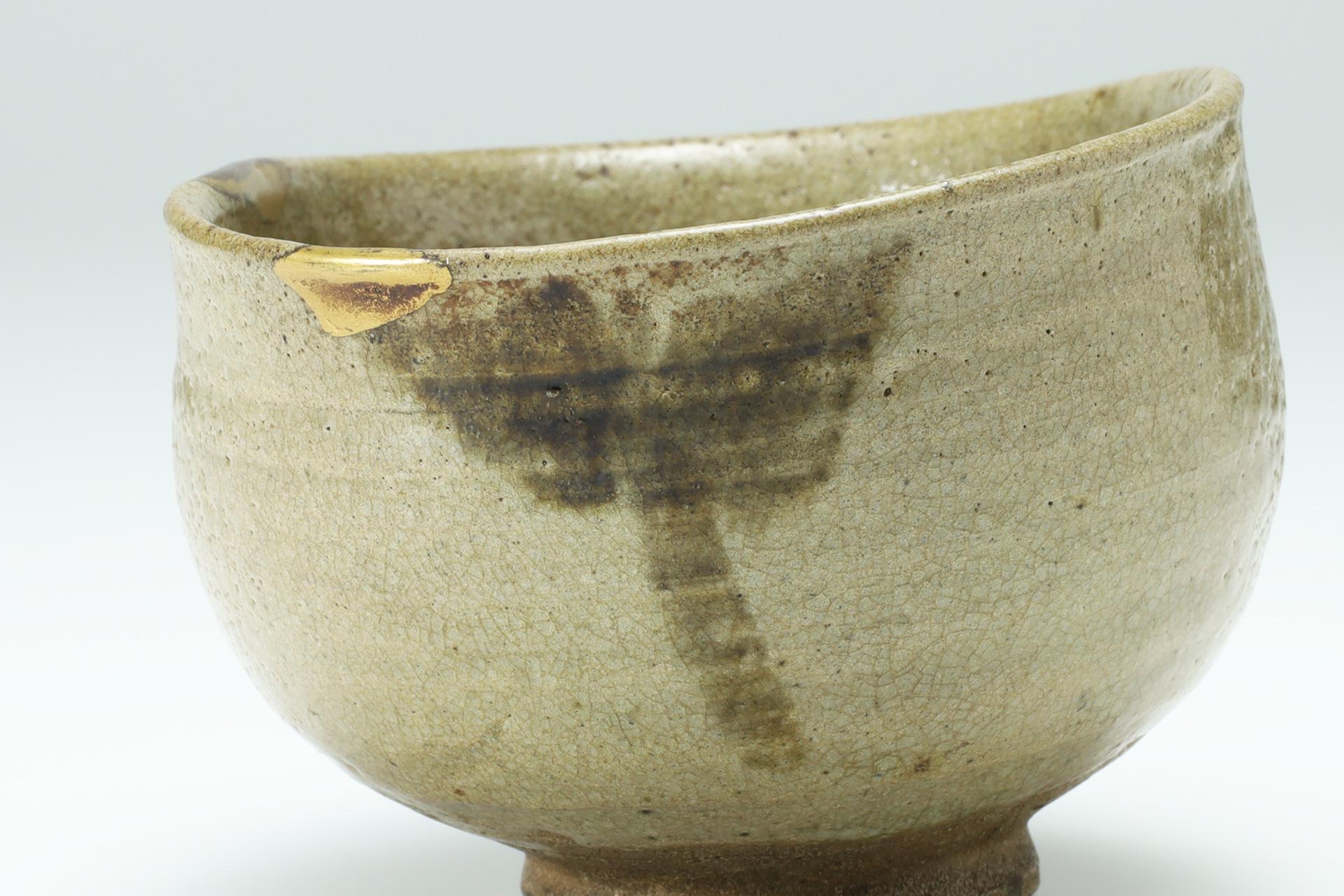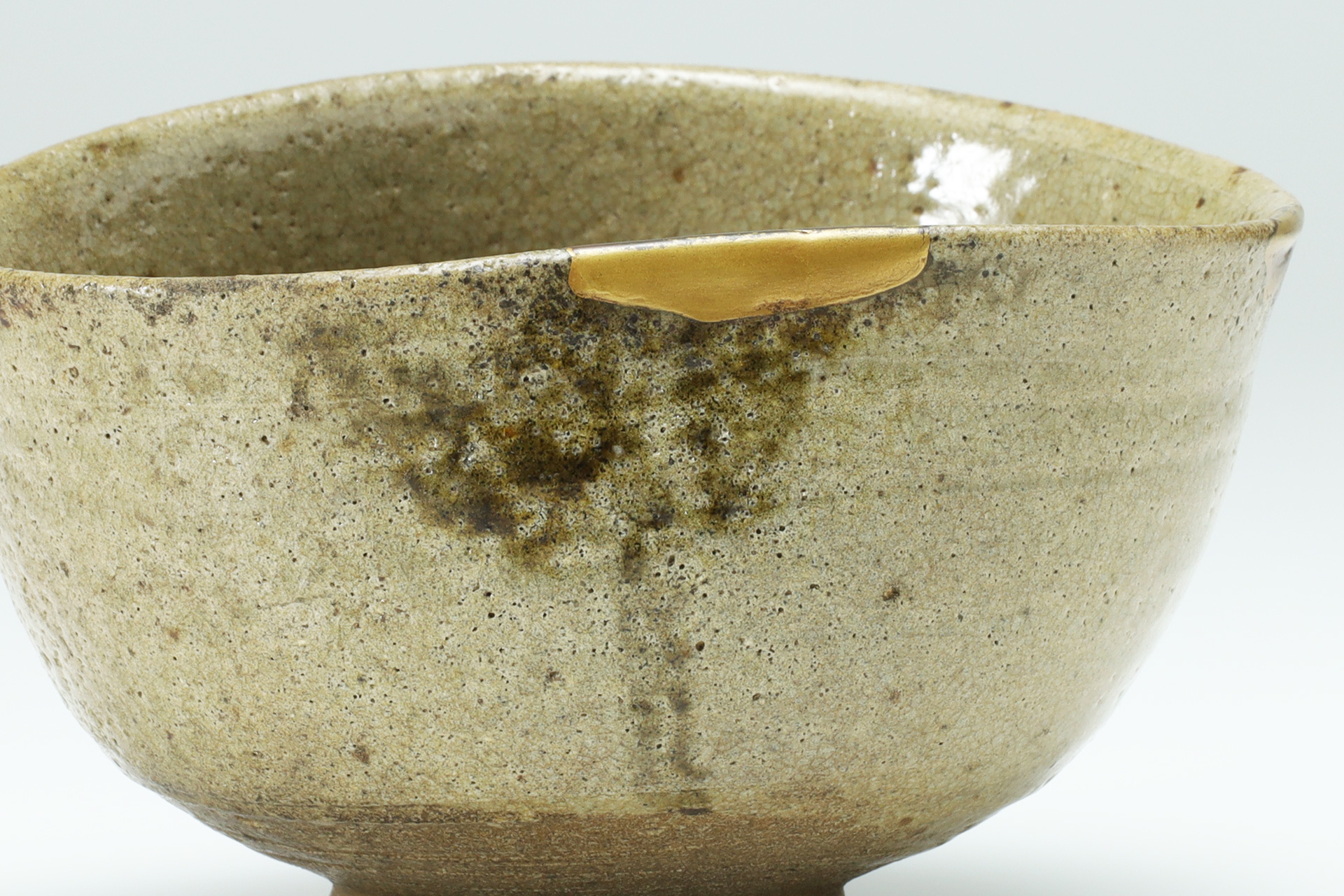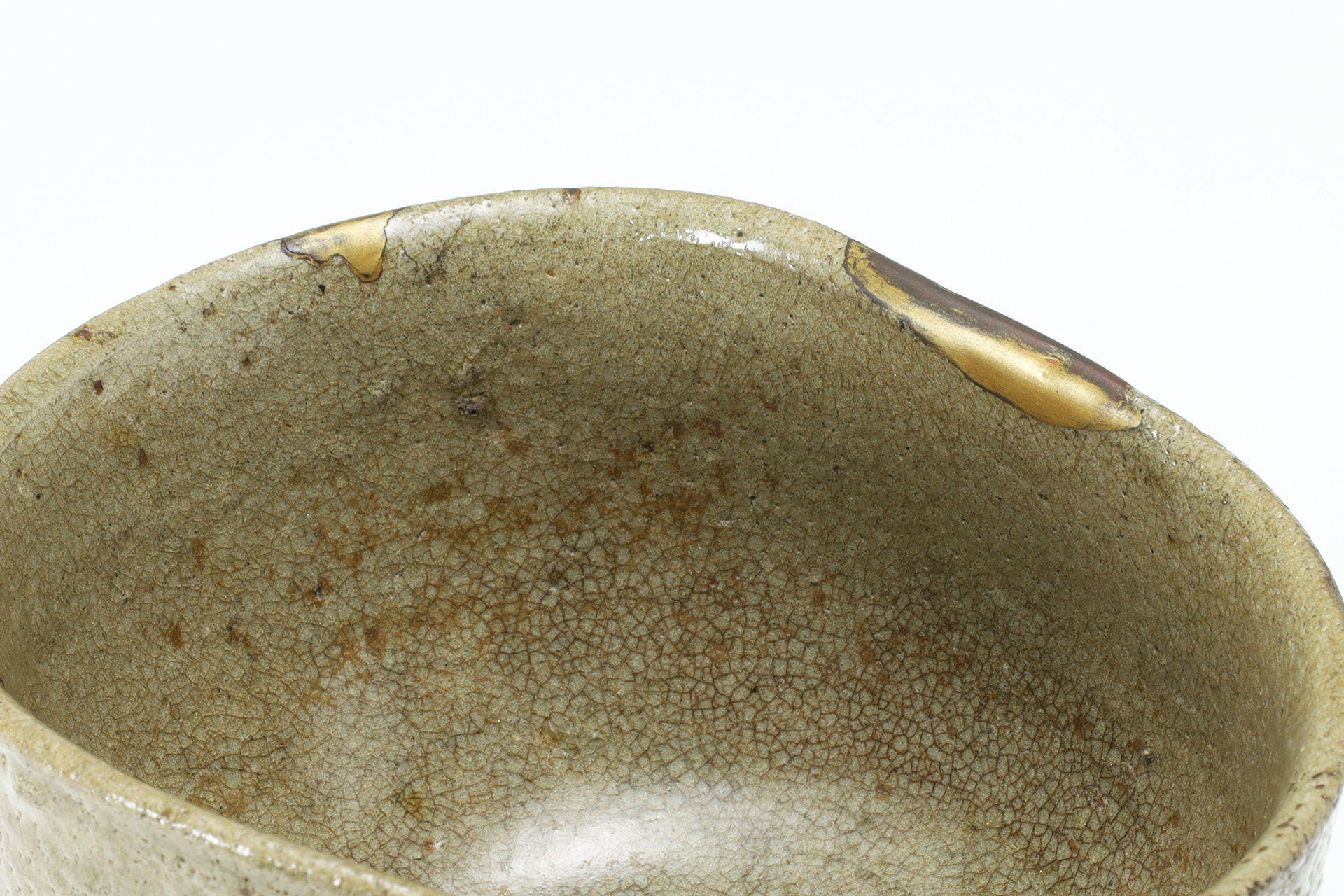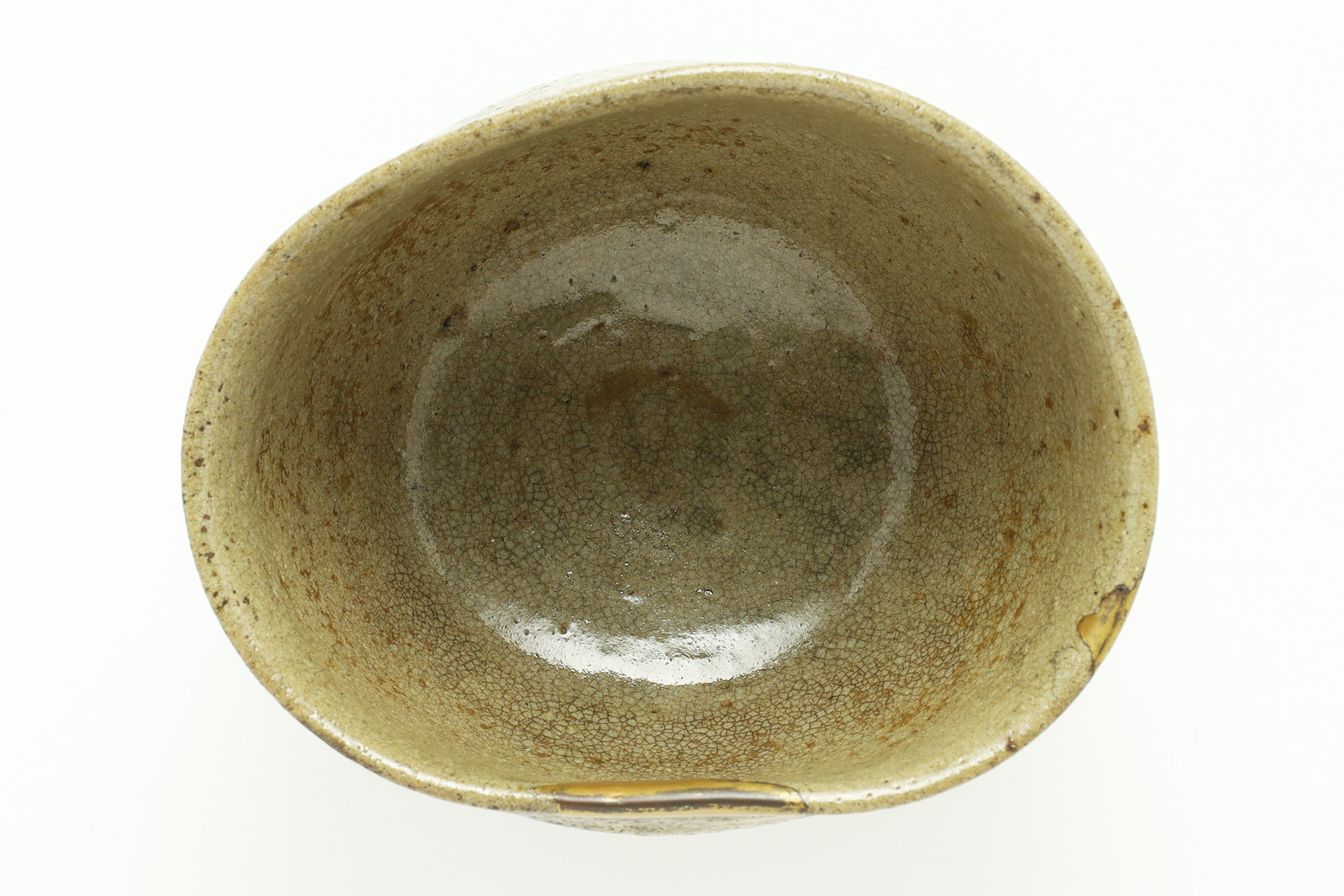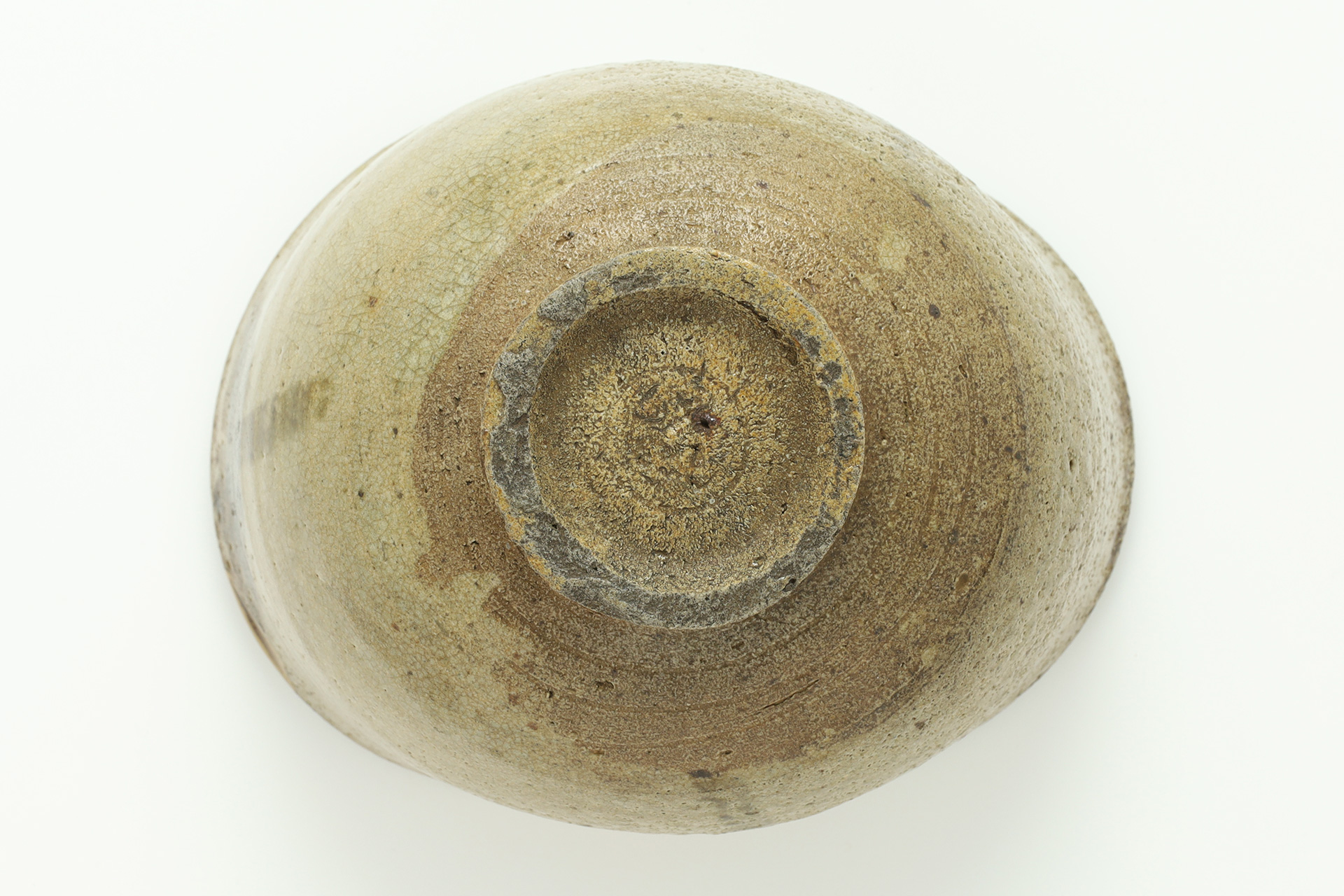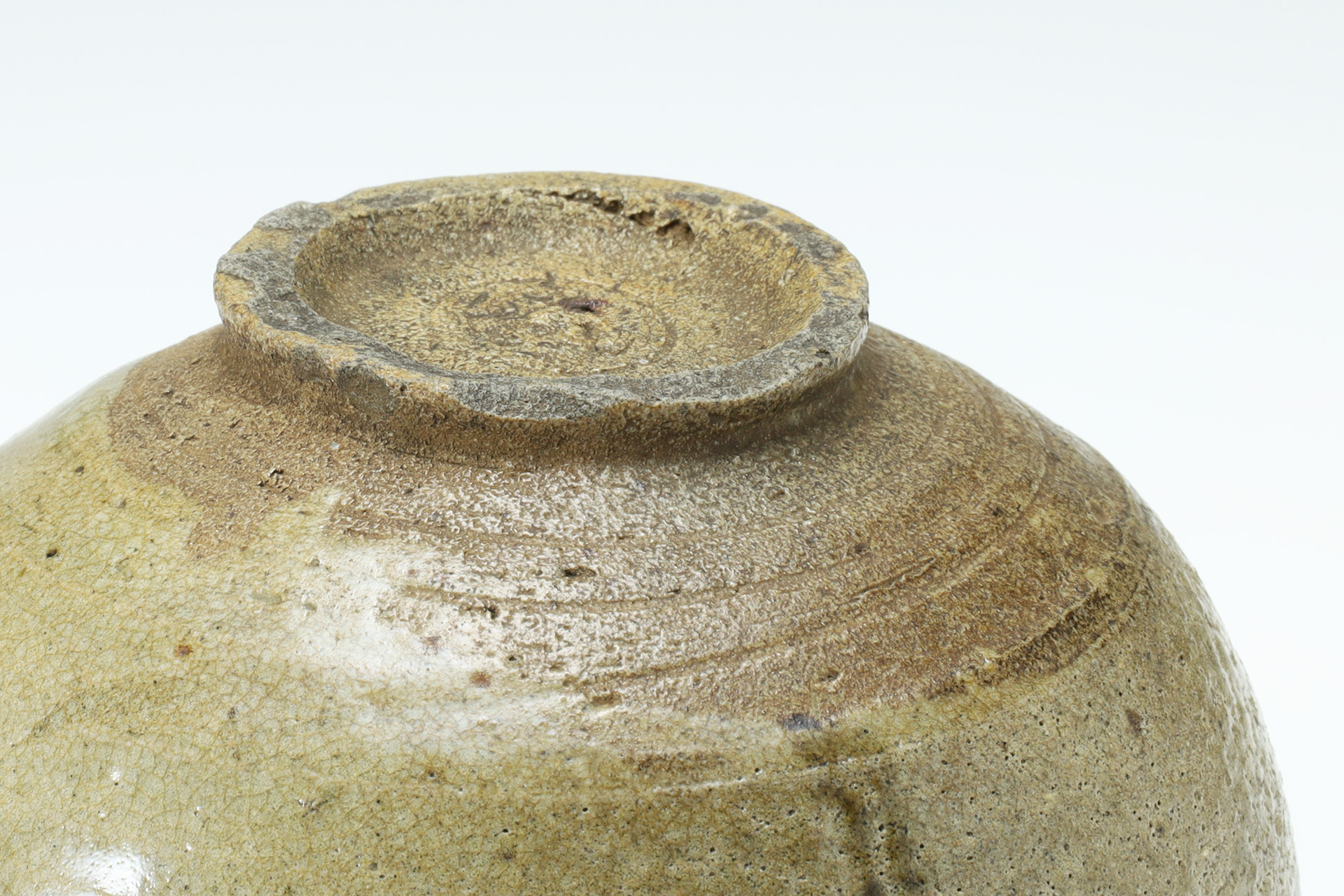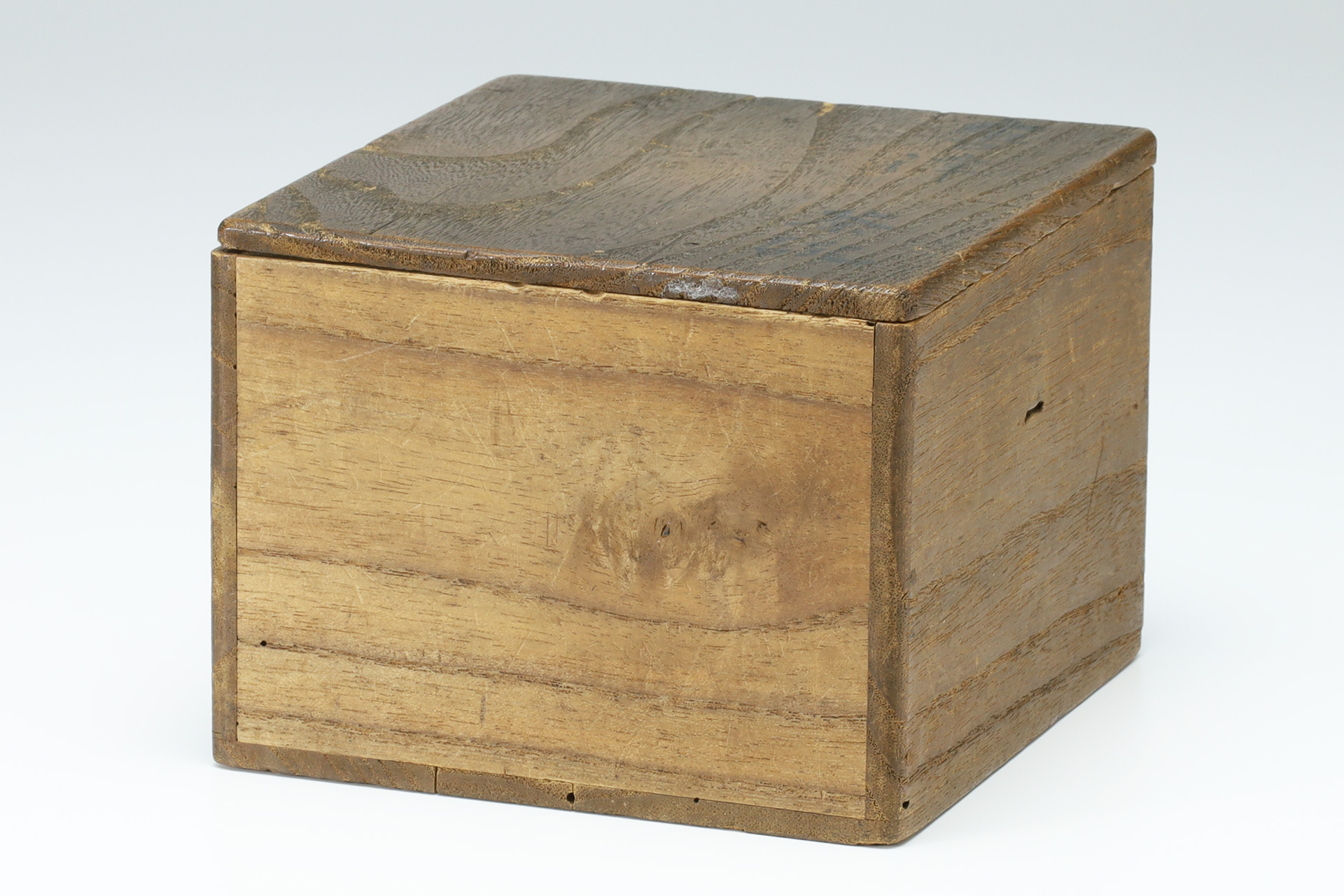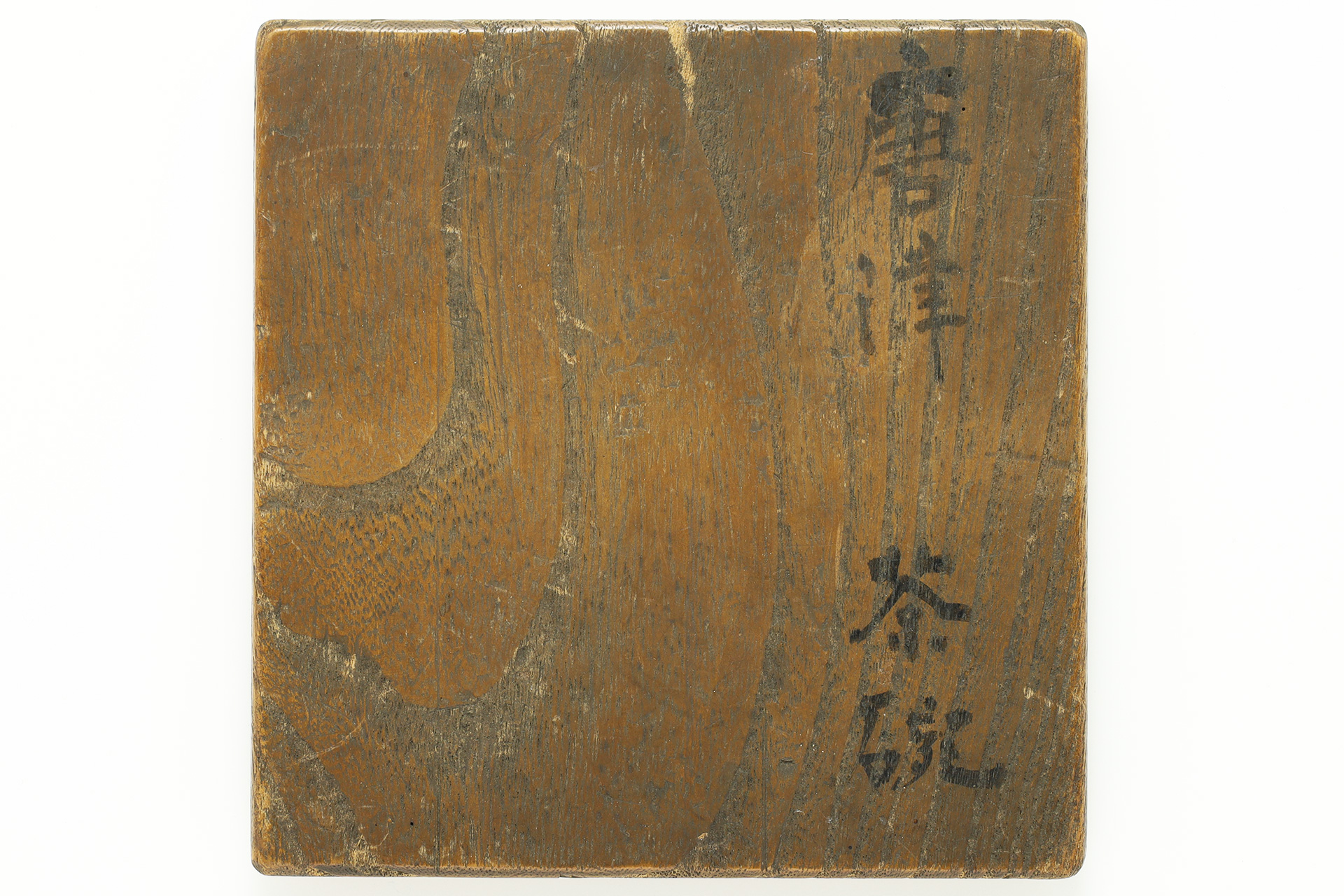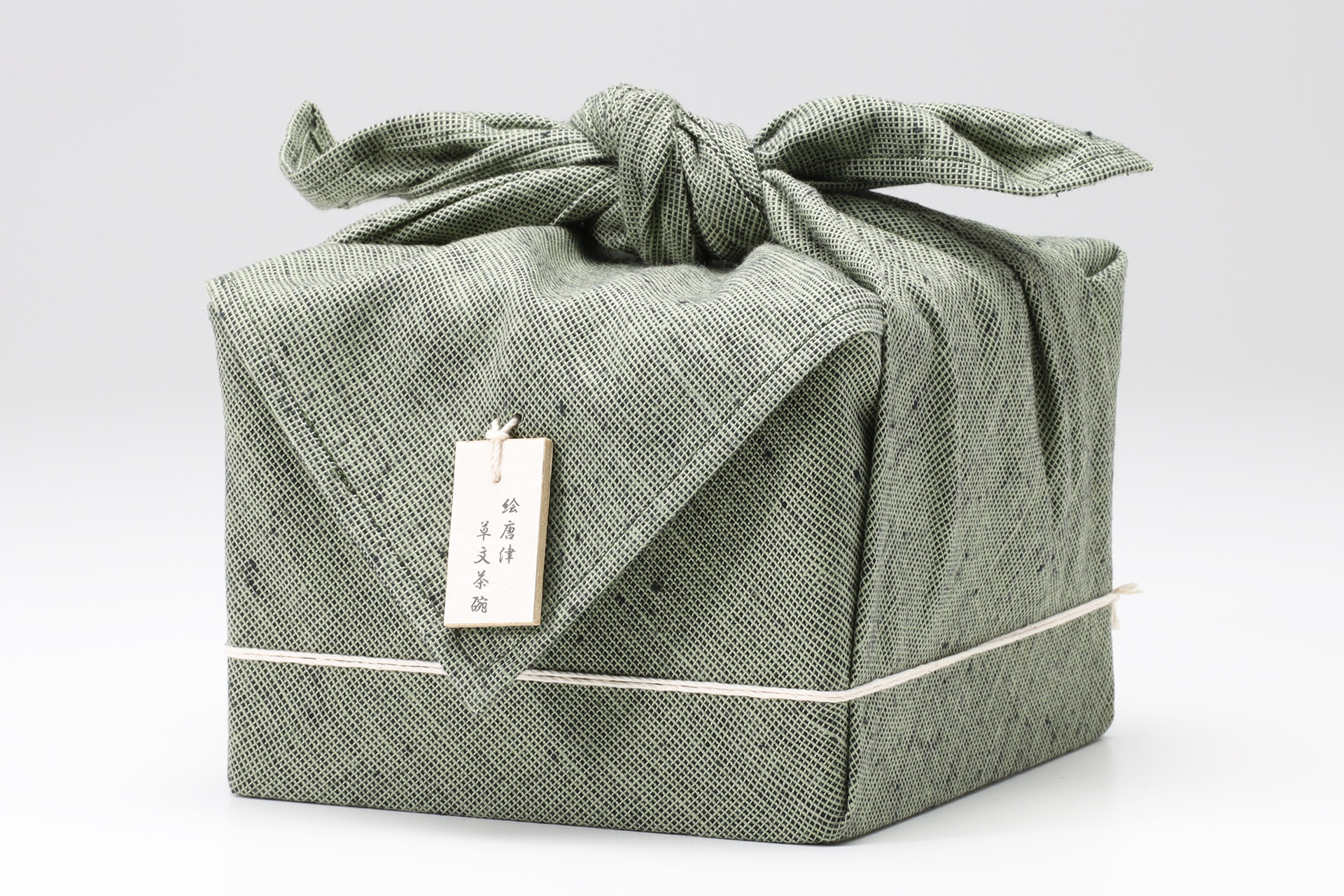This illustrated e-garatsu tea bowl has an attractive plump and generous shape. Many small tea bowls stand out in old-karatsu, but this work has good dimensions and is large enough to be used as a matcha tea bowl. Old-karatsu, with its base, texture, tea reflections, and heartwarming atmosphere that evokes nostalgia, continues to attract many people.
Inquiry
- Product Code
- 240402-3
- Period
- Momoyama-Edo Period
End 16th century-Early 17th century
- Weight
- 263g
- Diameter
- 12.7×10.3cm
- Height
- 7.7cm
- Bottom Diameter
- 4.8cm
- Description
- Old Wooden Box
- Condition
- There are two gold repairs at the edge
It has excellent base and soft texture, and is in good condition.

It was during the momoyama period that patterns began to be drawn on japanese pottery with a brush, and shino ware and karatsu ware are representative examples. The grass designs are drawn with a brush dipped in iron glaze.
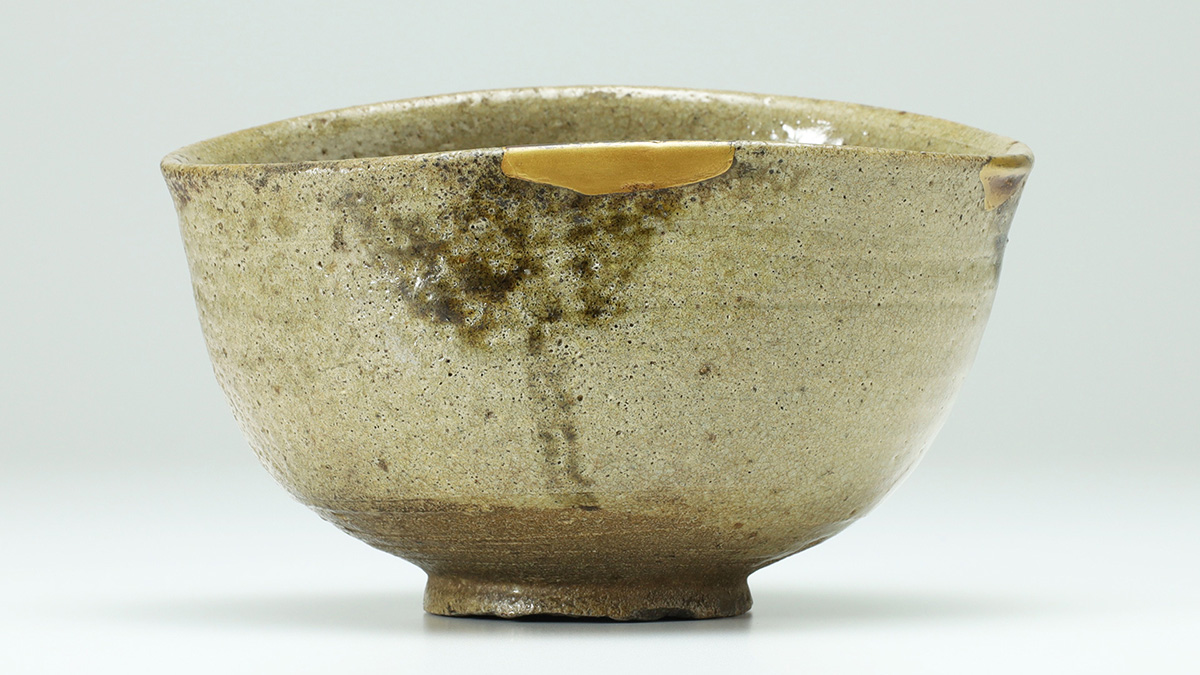
The iron painting has a soft bleed, creating a calm atmosphere.
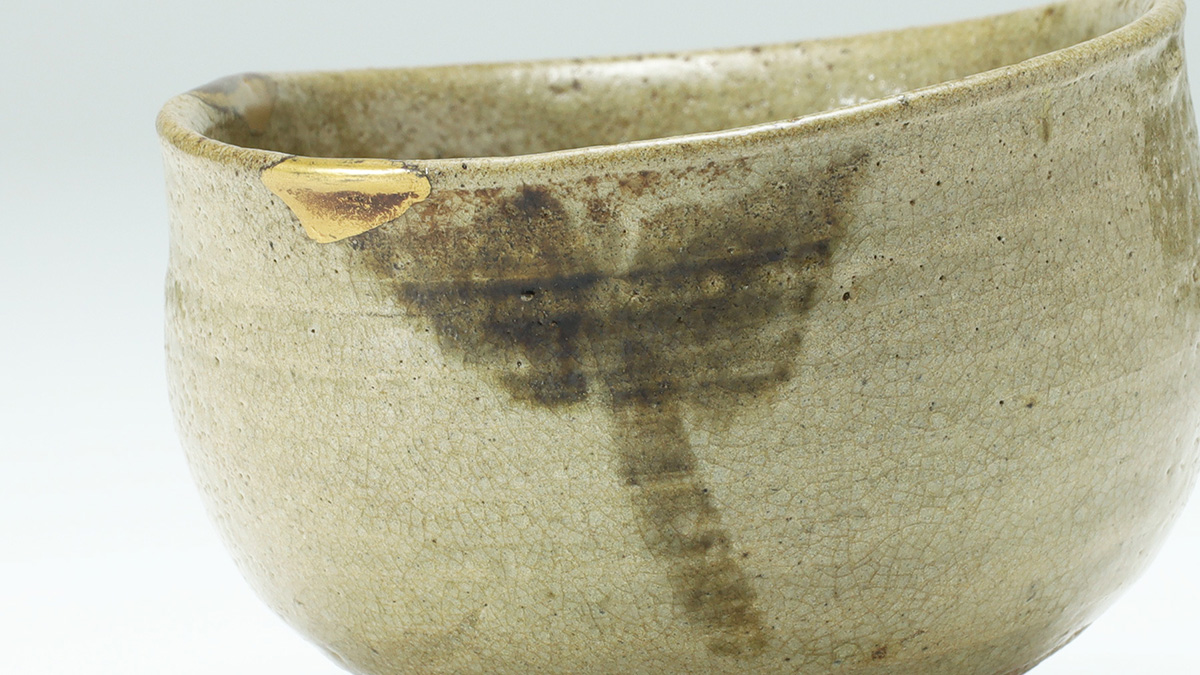
Old-karatsu has hydrophilic properties, and when it contains tea, its surface becomes fresh. As the saying goes, “Eight parts for the creator, Two parts for the user,” one of the great pleasures is being able to enjoy the growth of the vessel through its use.
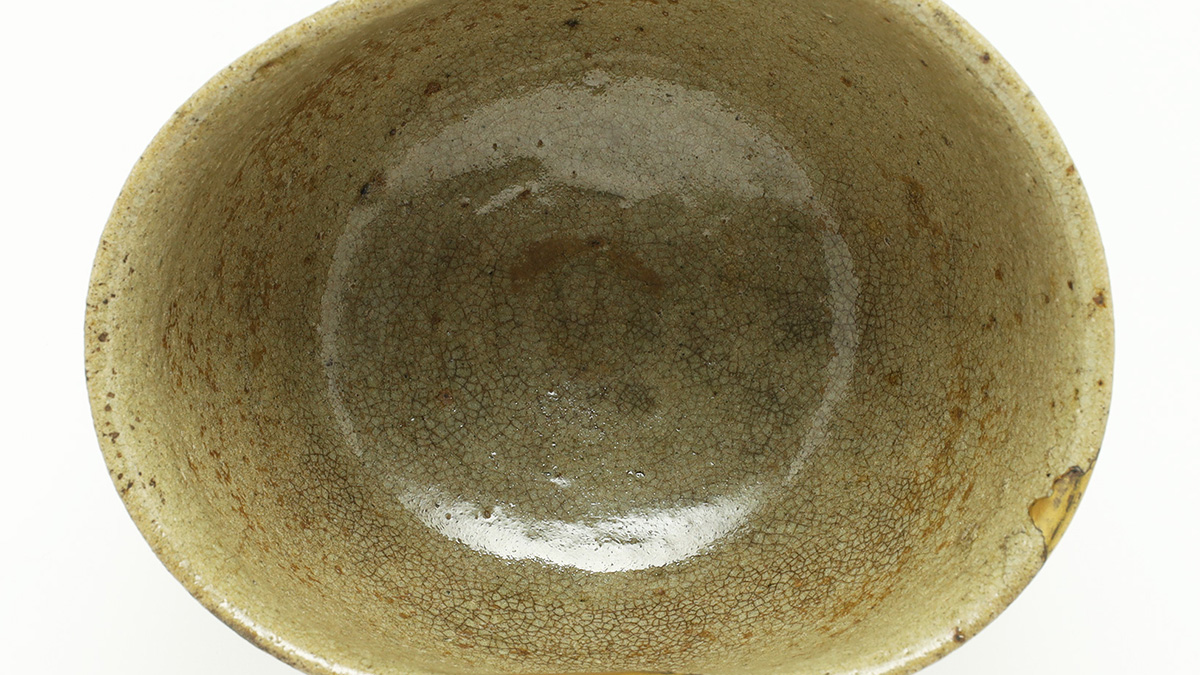
The thing that attracts the most attention in old-karatsu is the base. It has developed a good atmosphere after many years of use.
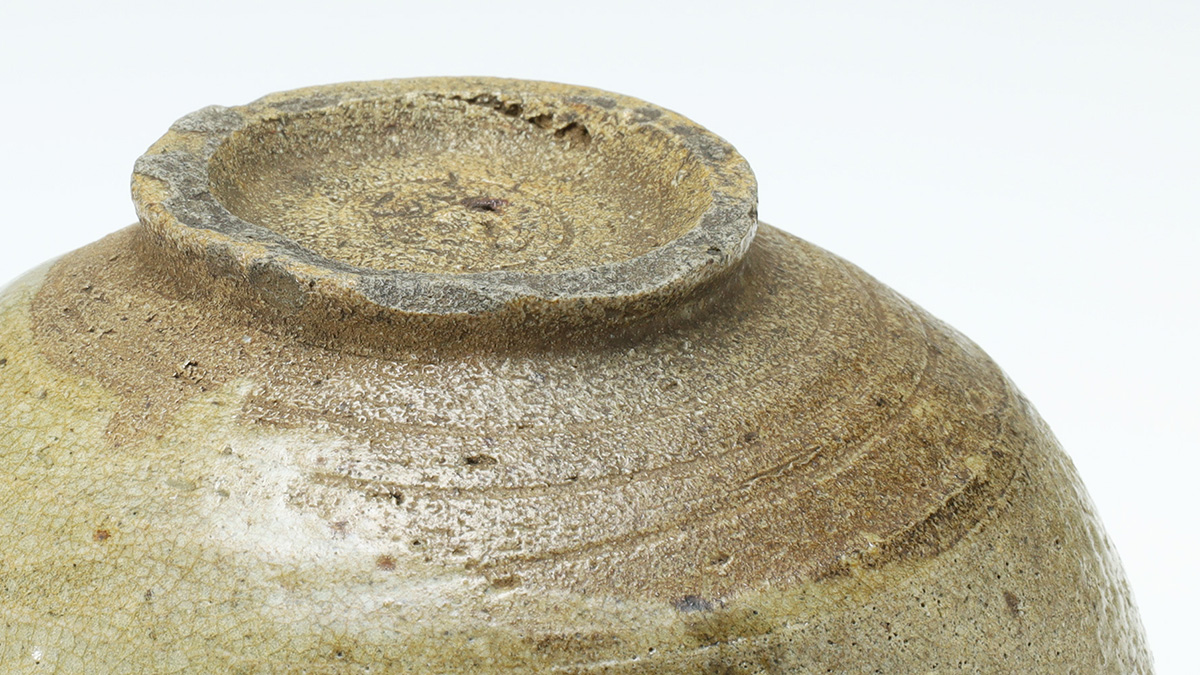
It is housed in the old wooden box and shows how it has been passed down with care.
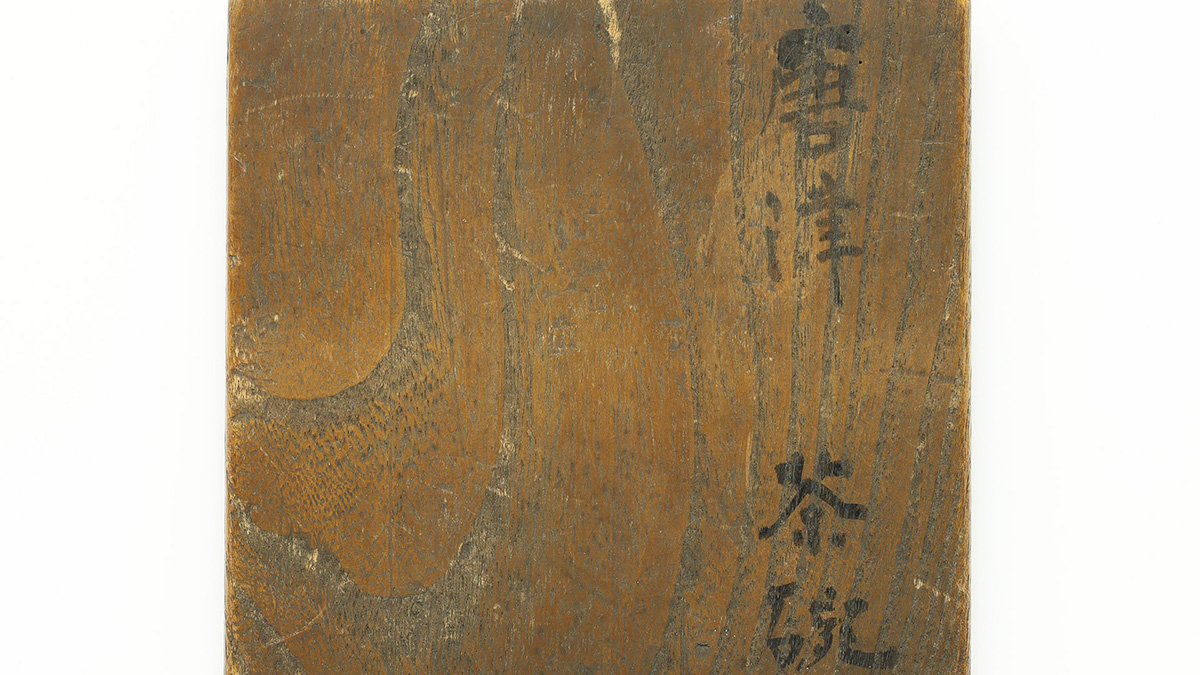
Old-Karatsu
Karatsu ware is pottery fired in the hizen region, centered around the karatsu domain in hizen country. The name originates from the fact that it was shipped from karatsu port, and it is highly regarded as a tea pottery, as it is praised as “Raku ware being the most wonderful, Hagi ware being second, and Karatsu ware being third.” It is estimated that around the end of the 16th century, in the kitahata district, karatsu city in the northern part of saga prefecture, Chikashi Mikawanokami Hata, the lord of kishidake castle invited potters from korea and opened a kiln. There are ancient kiln sites from the early days of karatsu ware scattered around the kishidake castle. In 1593(Bunroku 2), when the hata clan lost their territory due to Hideyoshi toyotomi’s anger, the potters of kishidake dispersed throughout hizen. After that, Hirotaka Shimanokami Terazawa took over the territory and established the hizen country karatsu domain.The confiscation of Hata’s territory and the closure of the kishidake kilns is one of the pieces of evidence that old-karatsu was being fired before 1593(Bunroku 2). The beginning of karatsu ware is estimated to be around the tensho era(1573-92)based on excavations and research. Karatsu ware experienced a prosperous period during the momoyama period to the early edo period, producing many simple and excellent works by the potters who were invited during the Bunroku-Keicho campaigns(1592-98). During the bunroku campaign, when hideyoshi toyotomi set up camp at nagoya castle, Oribe Furuta also stayed for about a year and a half from 1592(Bunroku 1)and is said to have directly instructed the karatsu kilns. Furthermore, the climbing kilns were also transmitted from karatsu to mino and built at kujiri motoyashiki. The achievements brought by the introduction of korean technology to japanese pottery cannot be measured. Karatsu ware first appeared in “Oribe Furuta’s Tea Ceremony Records” as “Dish of Karatsu Ware” in 1602(Keicho 7), and is concentrated in the keicho era(1596-1615). In addition, by the middle 17th century, the notation “Old-Karatsu” was already used in tea ceremony records. While most karatsu ware was mass produced as everyday items for ordinary people, it caught the eye of tea practitioners during the momoyama period to the early edo period when making matcha became popular, and it became pottery used in the tea ceremony. Among the works, there are also custom made works ordered by tea practitioners and tea utensil merchants, which receive particularly high evaluations due to their extreme rarity compared to the overall total number. In the 17th century, a significant event occurred for karatsu ware:the discovery of izumiyama porcelain stone and the successful firing of porcelain by korean potter Yi Sam-Pyeong(japanese name:Kanagae Sanbee). The subsequent expansion of imari ware production greatly affected the decline of karatsu ware. In the early edo period, while mishima-garatsu and nisai-garatsu were appreciated, the charm of old-karatsu was lost, and only karatsu domain kiln(ochawan kiln)remained. In the early showa period, old-karatsu researchers Kyoichi Kanehara(Tohen)and Wasaburo Mizumachi and Kuichi Furutachi excavated numerous ancient karatsu kiln sites in the hizen region, providing tens of thousands of valuable pottery shard materials. The unadorned earthiness and nostalgic richness of color in karatsu ware are full of cheerfulness and vitality, representing the essence of the art created by the earth and flames.
As it is used more and more, the expression of Old-Karatsu changes.
Old-karatsu acquires subtle changes in its appearance and a moist, rich flavor as tea stains and moisture seep into it. As the saying goes, “Eight parts for the creator, Two parts for the user,” one of the great pleasures is being able to enjoy the growth of the vessel through its use. Works that are under fired(the glaze hasn’t fully melted within the firing time)tend to have this tendency more strongly, and the presence of amamori tea bowl and the like is increasing.



